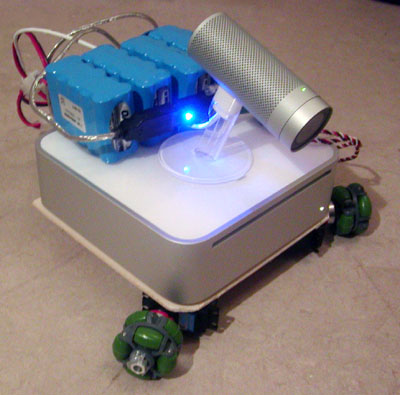Yesterday at the 3gsm gathering of mobilists organized by Rudy De Waele and Gotomedia, Fabien and I met various practionners in the field of mobile applications/location-based services. Interesting people and various projects like minifizz or my favorite: a Ghost Detector that works on cell-phone (made by Future Platforms who also worked on Twitchr that Matt Jones presented at Lift):
 |
Many paranormal investigators believe that fluctuations in Electro-Magnetic Frequences (or EMF) might indicate paranormal activity. Our application, built for mobile TV specialists WireTown, looks for these fluctuations and interprets them on a mobile phone screen as ghostly presences. It factors in regional issues and variations and compares the reception of users on the same network, flagging up expected peaks and troughs and linking them to a needle-and-gauge readout on the handset.
But it's more than just an on-phone novelty: building on the huge success of shows like Most Haunted and Derek Acorah's Ghost Towns on LivingTV, the application lets its users interact with a TV broadcast, producing an always-on link between viewers and a live show for the very first time. |
Apart from that Markus Angermeier proposed the idea of mobile hotspots like taxis wandering around in cities offering a free wifi access. Just like mobile phone booth that would offer a seamless and wireless connection (!?). Markus is an accessibility expert, creative director design for Aperto’s, consultant for Plazes (mobile phone demo and brainstorming on proximity-based scenarios).
Alex Kummerman presented us his ideas about location-based/mobile social software that we tried lately and pointed us on Michel Simatic for discussing ideas about games, mobile platforms and multi-user issues.
We continue our discussion with Russell about the issues related to techno-push in the context of location-based services. According to him, phone carriers and vcs are very reluctant to invest in that domain because they saw that it did not work (!) with the project they saw (pure techno-push lbs like restaurant-rating system or virtual post-its or "where is my buddy in the vicinity?"). The reason for that was very often bad scenarios/use cases (not user-centered).
Jaakko Villa, CEO of idean research in Finland quickly described us his user experience company.
Finally, one of the attendant described us the atrocious journey he had from the US to bcn. He had to be rerouted to Milano because his luggage was sent there. This seems to be avery curious moment in which what we discussed at the blogject workshop: object may become first-class citizen in the sense that a human being has change his behavior accordingly with his/her own artifact.















